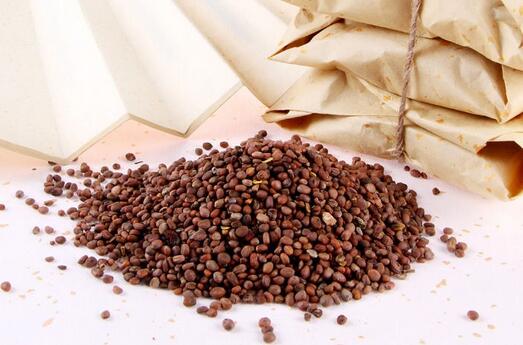Distribution:
Most part of China.
Properties (characteristics):
Acrid, sweet, neutral
Channels (meridians) entered:
Spleen, stomach, lung.
Actions & Indications:
Digestive stagnation, flatulence, noise in intestines, burping with acidic gas, cough and wheezing with phlegm, Chronic Bronchitis. Clinically, the extract of lai fu zi is being used in treating flat warts, diarrhea in children, menorrhagia (massive vaginal bleeding not during menses). The squeezed juice of lai fu roots has been effectively used, without known side effect, as enema for treatment of Colitis, proctitis (inflammation of the retum) and bleeding of colon.
Chemical ingredients:
Lai fu zi contains a small amount of volatile oil and 45% of fat. Among the volatile oil there are: methyl- mercaptan, α,β-methylbutanol, β, γ-hexenol. Among the fat there are: large amount of eruci acid, linoleic acid, linolenic acid, glycerol sinapate. it also contain sinapine, raphanin (a vegetable antibiotic). It also contains: n-triacontane, stearic acid, β, γ- sitosterol. Alcohol extract of mature seed contians: amino acid, protein, sugar, polysaccharide, phenol, alkaloid, flavonoid glycosied, phytosterols (plant sterools), vitamin C, B1, B2, E and coenzyme. Lai fu zi produced in Japan also contain organic germanium.
Dosage:
10 to 20 g
Cautions
Use with caution if case of qixu (qi deficient), pixu (spleen deficient). Ginseng is not compatible with lai fu zi.


![Diseases, Symptoms, tcm, [tcmwindow.com]](/uploadFile/adImg/2015/11/11/f5cbfcc0-4df5-4646-9b9a-f316651a0199.jpg)





